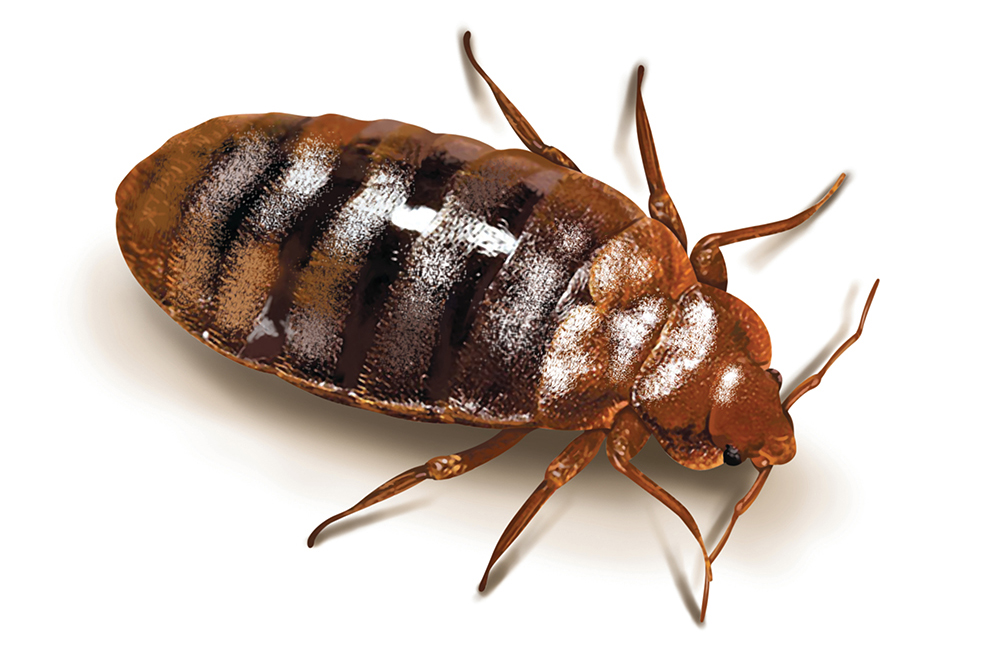Local Bed Bug Exterminator: DC Heat Treatment Solutions Available
Wiki Article
Checking Out the Science Behind Bed Insect Heat Treatments as a Lasting Pest Monitoring Technique
One such technique that has obtained grip in recent years is the use of warm therapies to combat bed pest problems. The complexities of exactly how warmth effectively removes bed insects and the broader ramifications for lasting pest management techniques make this a topic worth checking out further.Bed Pest Warmth Treatment Process

Thermal Fatality Point for Bed Pests
Revealing bed insects to raised temperatures past their thermal tolerance array is essential for attaining reliable removal in warmth treatment procedures. The thermal death point for bed pests refers to the temperature level at which these bugs can not survive. Research study shows that bed bugs begin to die when exposed to temperatures above 113 ° F(45 ° C) for a sustained duration. As the temperature boosts, so does the mortality rate of bed insects. At around 118 ° F(48 ° C ), bed pests start to die quickly, with a death rate of almost 99% within mins of direct exposure. This demonstrates the level of sensitivity of bed bugs to high temperature levels and highlights the performance of heat treatments in getting rid of infestations. By reaching and preserving temperatures over the thermal fatality factor for bed pests, pest administration specialists can make certain thorough elimination of bed bug populations, consisting of hard-to-reach locations where chemical therapies might be much less effective. Recognizing the thermal fatality factor for bed pests is important for executing successful warm therapy strategies and achieving sustainable insect administration results.Benefits of Warm Treatments
Having developed the vital thermal death factor for bed bugs, it is critical to now check out the substantial advantages that warm therapies offer in successfully getting rid of these resilient bugs. One of the key advantages is that warm can permeate deep into fractures and crevices where bed bugs conceal, ensuring that even the most hard-to-reach areas are heated up to dangerous temperature levels.Additionally, warm treatments are environmentally friendly and non-toxic, making them a sustainable bug monitoring strategy. Unlike chemical pesticides, warm treatments do not leave unsafe deposits that can posture risks to human health or the environment. This element is specifically vital in delicate settings such as hospitals, schools, and houses where chemical use may not be desirable.
Furthermore, warm treatments have a high success rate in getting rid of bed insect invasions in a solitary therapy, minimizing the requirement for several check outs and lessening interruption to residents. This efficiency not just saves time and money but also gives comfort to those taking care of bed insect issues.
Efficiency of Warm Treatment

Research researches have continually demonstrated the performance of warm therapies in accomplishing a high price of bed insect death. Appropriately conducted warm therapies can reach all the splits and crevices where bed pests may be harboring, ensuring a detailed approach to extermination. Warmth therapies have the included advantage of killing bed insect eggs, which are often resistant to typical chemical therapies. Overall, the efficiency of warmth therapies in eradicating bed insect problems makes them a lasting and reputable parasite management technique.
Sustainable Insect Administration Perks
Implementing lasting parasite monitoring methods provides long-term advantages for both the atmosphere and public health. By utilizing approaches such as warm treatments for parasite control, we can minimize the reliance on dangerous chemical pesticides that can have damaging impacts on environments and human health - exterminator. Lasting insect management approaches assist in preserving biodiversity by targeting specific bugs without harming non-target microorganisms, thus maintaining a well balanced community
In addition, sustainable parasite administration practices add to the overall wellness and well-being of the general public. By minimizing direct exposure to toxic chemicals utilized in traditional bug control techniques, warmth treatments supply a safer alternative for bug management in domestic, business, and public spaces. This decrease in chemical usage likewise helps in stopping chemical residues from his explanation polluting water, dirt, and air, guarding environmental high quality.
Verdict
To conclude, bed insect warmth therapies have actually been shown to be a efficient and lasting insect monitoring strategy. The thermal death point for bed insects makes them at risk to heat treatments, which have many benefits over typical chemical therapies. The effectiveness of heat treatments in getting rid of bed bug invasions while decreasing ecological influence highlights the potential of this method as a sustainable solution for insect control.The bed insect warmth therapy procedure entails elevating the temperature level within ravaged locations to a get more degree that properly removes bed pests and their eggs. By reaching and maintaining temperatures over the thermal fatality factor for bed pests, bug monitoring specialists can make sure extensive elimination of bed insect populaces, consisting of hard-to-reach locations where chemical therapies might be much less efficient. One of the key advantages is that warm can penetrate deep right into fractures and gaps where bed pests conceal, making sure that also the most hard-to-reach locations are heated up to lethal temperatures. Unlike chemical treatments that may leave behind resistant populations, heat therapies supply a safe and ecologically friendly solution that can penetrate deep right into furniture, walls, and various other hard-to-reach areas where bed bugs hide.
The thermal fatality point for bed bugs makes them great site at risk to warm treatments, which have numerous benefits over conventional chemical treatments.
Report this wiki page